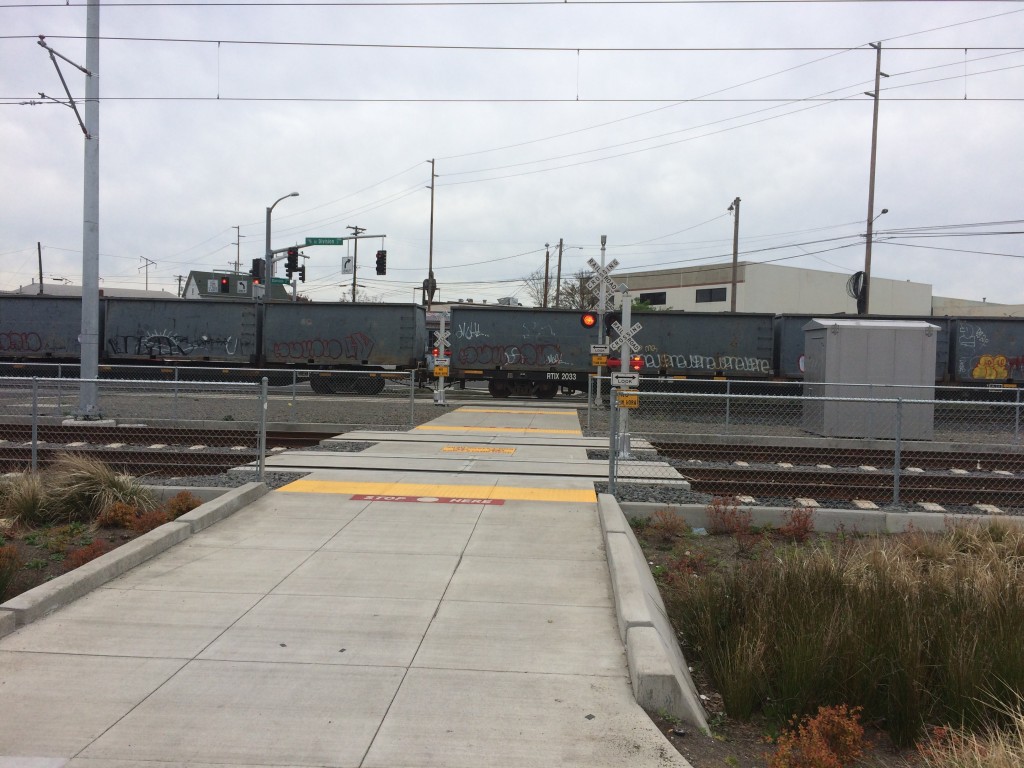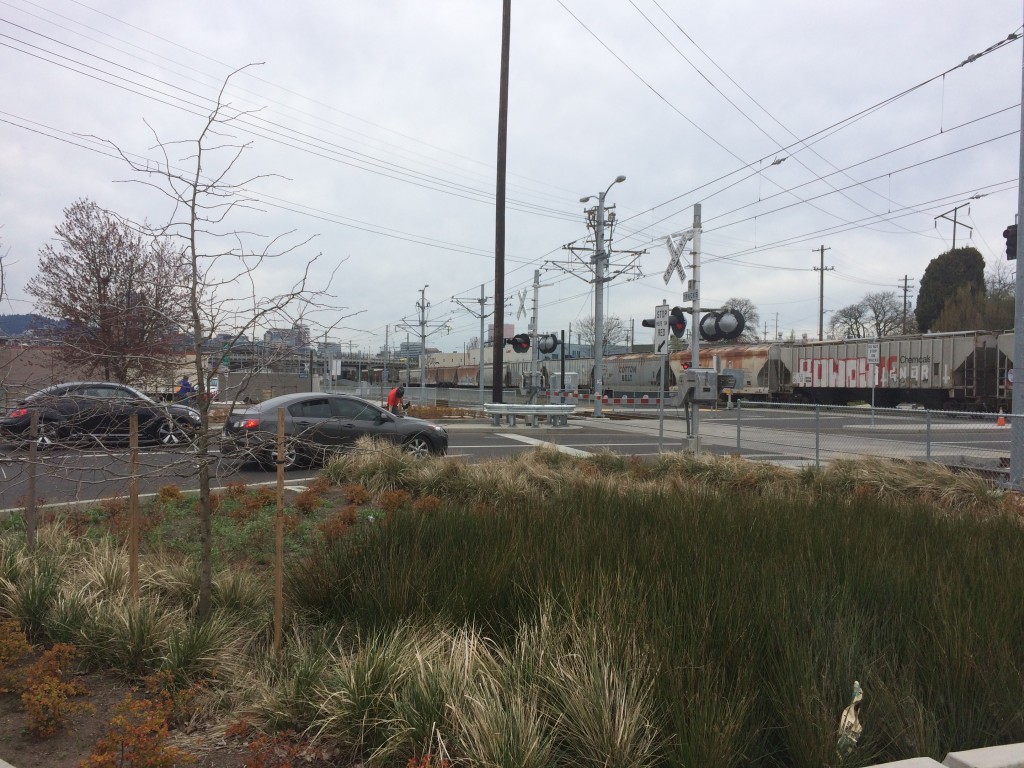Yes, all vehicles have to stop and remain stopped when a railroad signal is displayed or a train is approaching and is close enough to be an immediate hazard.
In Oregon a vehicle (which includes a bicycle whether operated on the street or the sidewalk) must stop for a railroad signal or when a train is approaching and is close enough to be an immediate hazard, even if there are no railroad crossing signals.
ORS 811.455 requires vehicle operators to stop at a stop line or, if there is no stop line, not less than 15 feet from a rail line when:
- A clearly visible electric or mechanical signal is warning of the approach of a train.
- When a crossing gate is lowered.
- When a signal is given by a flagger or police officer that a train is approaching.
- When an approaching train is clearly visible and is so close as to be an immediate hazard.
- When an audible signal is given by a train because its speed or nearness to the crossing is an immediate hazard.
A vehicle operator must stop and remain stopped for a train until it is safe to proceed across the tracks. This means that a vehicle operator is not required to wait until the signal ends, only until the train has passed and it is safe to proceed: “A driver who has stopped for the passing of a train at a railroad grade crossing in accordance with the provisions of this section shall not proceed across the railroad tracks until the driver can do so safely.” ORS 811.455(1)(b).
When the crossing has crossing gates, though, a vehicle operator must wait until the crossing gate is fully opened before proceeding though, even is there is no train approaching or the train has already cleared the crossing: “A person shall not drive any vehicle through, around or under a crossing gate or barrier at a railroad crossing while the gate or barrier is closed or is being opened or closed.” ORS 811.455(1)(b).


